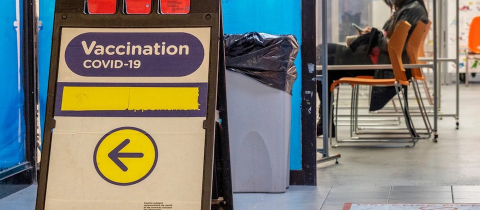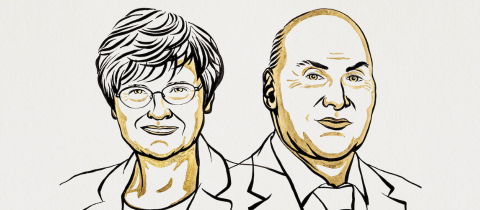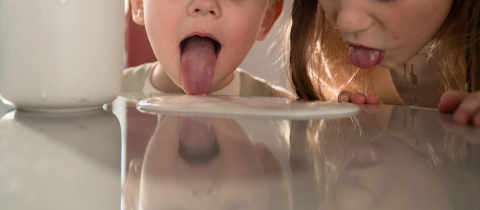Take-home message:
-30 to 80% of people with COVID-19 report loss of smell, known as anosmia.
-The likely targets of the SARS-CoV-2 virus are supporting cells in the nose that support growth of the nerve cells that allow us to smell
-Anosmia treatments being studied include: Retraining the brain to smell, calming nasal inflammation and finding ways to regrow damaged nasal cells
One year, my dad came down with a terrible cold and a very high fever. As with many colds he’d had before, he lost his sense of smell. But this time, it didn’t come back.
By Christmas that year, we were all gathered in the kitchen as my dad cooked a big family dinner. My cousin, who was standing near the stove, said she smelled gas. It turned out one of the burners was no longer lit and gas was escaping quickly through the house. My dad, who had been at the stove the entire time, couldn’t smell it at all.
So while losing your sense of smell seems like a mere inconvenience, if you can’t smell a gas leak or smoke from a fire, or even food that has gone bad, it can quickly turn into a life-threatening condition. Or how about a new parent who can no longer smell their new baby? Many of life’s pleasures come from enjoying specific smells and losing this sense can be devastating.
When the SARS-CoV-2 virus arrived last year and became a global pandemic, many people who were infected reported losing their sense of smell. It was such a common complaint that it was added to the list of symptoms used by the CDC to diagnose the disease. Anywhere from 30 to 80% of people who test positive for the virus that causes COVID-19 have reported loss of smell, known as anosmia.
Measures matter
One of the reasons for the wide variation in the estimates of COVID-19-associated anosmia is the way that smell is measured. Using subjective, patient-based questionnaires, interviews and health records can be unreliable. But gathering more reliable objective measures requires testing patients in person by having them smell actual smells. These tests are hard to coordinate during a pandemic that recommends social distancing.
A group at the Monell Chemical Senses Center reviewed existing research and found that with direct, objective measures, about 77% of COVID-19 patients had smell loss versus only 44% if researchers used more subjective self-reporting methods.
Cases of anosmia are certainly up in Ear, Nose and Throat specialist Jay Piccirillo’s practice. “While we’ve known about anosmia with viruses for a very long time, the magnitude of infected people who have presented with this is just unprecedented,” says Piccirillo, MD, who is also a professor of otolaryngology at Washington University School of Medicine in St. Louis, Missouri.
He says the good news is that for about 90 to 95% of patients with COVID-19-related anosmia, their smell comes back within anywhere from two weeks to three months. “But there are those remaining 5 to 10% of people for whom either their smell doesn’t come back, it comes back reduced or comes back in a distorted way,” says Piccirillo.
This distorted sense of smell, known as parosmia, can present with patients reporting that normally pleasant smells are now very unpleasant, with odours they describe being like garbage, burnt rubber or smoke. This can severely impact the quality of life as these patients may find it difficult to stomach any food, which often tastes the same as the unpleasant smells they are smelling.
Not your typical cold-related loss of smell
My dad’s loss of smell began with a seriously stuffed-up nose. But many patients with COVID-19-related anosmia don’t complain of nasal obstruction at all. Loss of smell also seems to happen much earlier in a SARS-CoV-2 infection, which is one reason it is such a good diagnostic tool.
We smell by using the millions of nerve cells called olfactory neurons that sit in the mucous membrane of our nose. Different groups of these neurons detect different types of smells. A group of researchers led by Harvard Medical School wanted to pinpoint which cells in the nose the SARS-CoV-2 virus was attacking. After analyzing mouse, non-human primate and human nose tissue samples, the scientists discovered it was the cells supporting the olfactory neurons that contained the ACE2 receptor, which the SARS-CoV-2 virus attaches to in order to infect cells.
The researchers think that if the virus infects these support cells, they no longer provide nutrients and structural support to the olfactory neurons, leaving them damaged and unable to transmit smells from the nose to the brain. While this finding must still be verified with further research, it could help explain why many patients do get their smell back. If patients clear their infections before the supporting cells become too damaged, this might spare the neighboring olfactory neurons any collateral damage.
Relearning how to smell
But what is someone who has not regained their smell after clearing their SARS-CoV-2 infection supposed to do? This has become more frequent in Piccirillo’s practice, particularly after the second wave of infections that hit St. Louis last fall, he says.
A common treatment for such patients has traditionally been smell or olfactory training. Developed by Thomas Hummel and colleagues in Germany around 2009, it works by having patients with anosmia sniff essential oils for a few minutes twice a day for a number of weeks. The smells most commonly used are: rose, lemon, cloves and eucalyptus. The thought is that these smells may target various groups of olfactory neurons in the nose, much like different types of flavours target the various taste buds in the mouth, says Piccirillo.
Research shows that our olfactory neurons are one of the few regions of our brains that can regrow and reorganize throughout our lives, a process called neuroplasticity. As we get older, neuroplasticity happens less frequently, which means your age may have an impact on how well treatment may work. The idea of smell training is to take advantage of this neuroplasticity and try to retrain the brain to learn how to smell again.
Piccirillo’s group is studying whether smell training should be limited to the four commonly used smells, or will patients do better if they can choose from a wider variety of smells. His group is also examining whether patients who look at a high-quality image of what they smell while undergoing the smell training can strengthen the connections in their brains even more.
Another option for patients with anosmia is to try steroid nasal sprays or rinses. These may calm the inflammation of the nasal cells and allow the damaged olfactory neurons to repair themselves.
Piccirillo’s group is looking at whether an asthma drug called theophylline used in a nasal wash may help, as well. In patients with asthma, theophylline may be prescribed to relax the smooth muscles in the lungs, making it easier to breathe. The drug is a phosphodiesterase inhibitor which inhibits phosphodiesterase enzymes. These enzymes normally break off phosphate groups and decrease the production of the growth factors cAMP or cGMP, which help certain cells grow. The hope is that if patients with anosmia are given theophylline as a nasal rinse, it could help promote growth of cells that may restore the function of the damaged olfactory neurons.
My dad, who has now been unable to smell for over seven years, is an avid chef who loves to entertain by cooking elaborate meals. Just as he was beginning to think regaining this key sense was a lost cause, he recently had a glimmer of hope, when for one day, he was suddenly able to smell the sharp, citrus scent of a lemon.
What about COVID-19 and taste?
Smell and taste are very closely linked. When you have a cold and can’t smell, it often affects your sense of taste, as well. Recently, an international team of scientists discovered that cells lining the mouth may also be susceptible to infection by the SARS-CoV-2 virus. The researchers looked at oral tissues from healthy people and found the RNA instructions for making two key SARS-CoV-2 viral entry proteins - the ACE2 receptor and the TMPRSS2 enzyme - in certain cells of the salivary glands and tissues lining the oral cavity. This may mean that the SARS-CoV-2 virus could be causing loss of taste by damaging cells in the mouth as well as the nose.
Gaia Remerowski is a senior content strategist at Washington University School of Medicine in St. Louis. Her interest in science communication began during her undergraduate studies working as an intern for the McGill Office for Science and Society, where she learned that you don’t have to settle for just “doing science,” you can also tell engaging stories about it.







